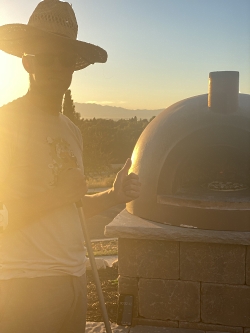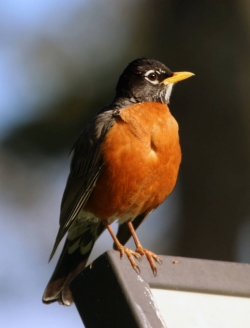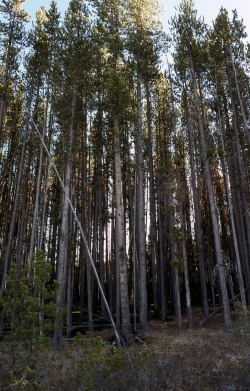
Courtesy & © Patrick Kelly, Photographer
In winter, I seek it out and try and absorb as much vitamin D as I can. I can appreciate that it gives us nutrition, life, longevity. I inhale as I look up and if I try hard enough I think I can gently photosynthesize. If I get real desperate, I’ll make my optometrist’s scorn roll out of my mind as I play some lighthearted sunstare, burning a gentle nimbus of black into what was once a perfectly fine astigmatism.
In spring I feel as though I can count myself among the ilk of flowering trees, alien hybrids in their own right. The sun bakes my own winterlogged bark, and I too reach forth beyond my skin. I use my palms as leaves stretching upwards and my warmed respite as flowers. I allow myself to feel awakened, thawed beyond simply thawing, and into growth. I exhale as I look up and warm my bones by that big yellow fire in the sky.
In summer I begin to gripe and wear increasingly larger hats. I deeply feel what semi-arid means, and eventually begin to ponder if that’s just marketing against the surely true aridity I feel. My dormant joints rediscover their ranges of motion and youthful play blooms perennial in my lexicon. And, it gets hot. Hot hot. My love, though, does not wane as I seek increasingly dense shade through the season. This love persists in the dog days of summer because while I pant in lily-skinned evapotranspiration, a life of hard winters reminds me to hyperphage my vitamins while I can. I inhale as I look around and see the life which feeds from the sun just as I do. We are all in the same boat.
In fall my solar binge takes full stride, paired neatly with cool winds foreboding the coming darkness. Just how summer mirrors winter, fall mirrors spring as I stock up and prepare for another winter. As want gives way to need, I try and push the sun into my own roots. I store memory, reflection, and nostalgia in one cellar, and hard cider, wild berry jams, and garden salsa in the other. I exhale and stoke the coals which will carry me to yet another spring.
So this spring as you, too, are finding your own leaves and flowers bend to the fresh-stoked fire in the sky, I invite you to reflect upon your own relationship with the sun. See how it molds you. Feel your gripes as flippant and your gratitude as labyrinthian. Hear how it draws the world in and out of breath. Even if you don’t always like it, discover how you love it.
I’m Patrick Kelly, and I’m Wild About Utah.
Credits:
Images: Courtesy & © Patrick Kelly
Audio: Courtesy & © Kevin Colver https://wildstore.wildsanctuary.com/
Text: Patrick Kelly, Director of Education, Stokes Nature Center, https://www.logannature.org
Included Links: Patrick Kelly & Lyle Bingham, Webmaster, WildAboutUtah.org
Additional Reading
Wild About Utah, Posts by Patrick Kelly
Stokes Nature Center in Logan Canyon, https://www.logannature.org/




